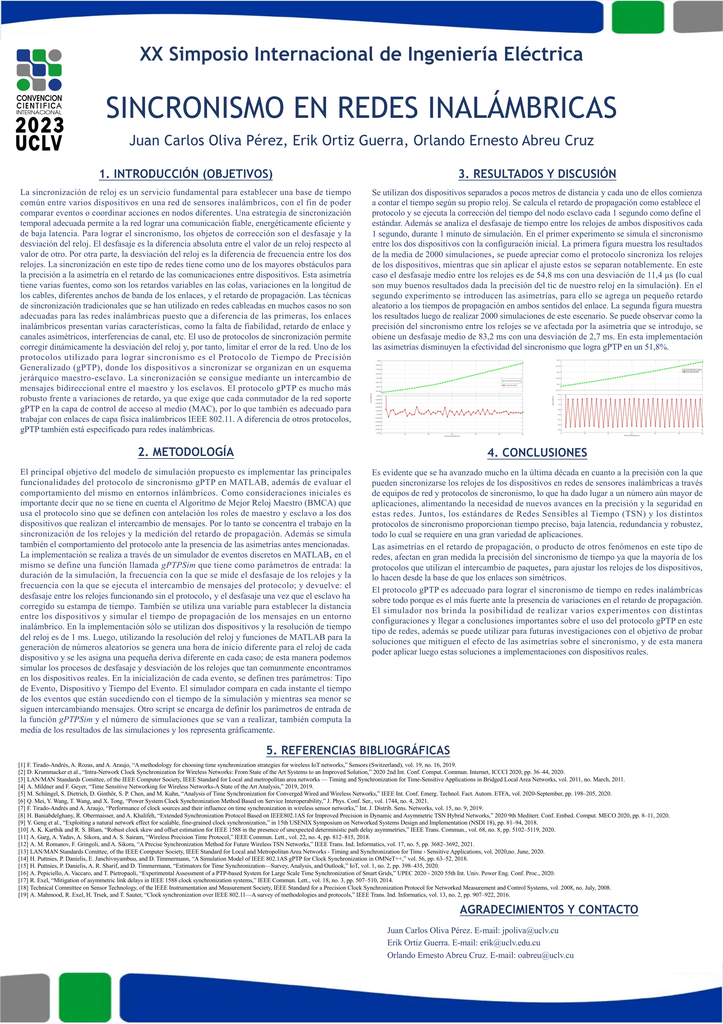Executive Secretary

XX International Symposium of Electrical Engineering
SIE 2023

Time-sensitive networks enable real-time communication and convergence of previously separate network parts. Time synchronization is an important issue in wireless sensor networks in order to be able to compare events and tune actions. Also, time synchronization plays a critical role in the realization of certain high-value applications. To achieve effective synchronization, the correction objects are the offset and the deviation of the clocks. In synchronization over packet-based networks, one of the major hurdles to accuracy is the asymmetry in the communications delay between devices. Several protocols are used to achieve synchronism and among them, gPTP is selected as it is much more robust to delay variations. The time synchronization standard is based on the principle of exchange of messages between master and slave. However, the standard assumes symmetrical communication links causing errors in clock synchronization when asymmetries exist. In the paper, we simulate the behavior of the protocol in a wireless network through a discrete event simulator developed in MATLAB and verify that the devices are synchronized in time. In addition, asymmetry in the communication links is implemented and we demonstrate that it affects the synchronism accuracy. This simulator can be used to implement solutions that mitigate the effect of asymmetries on synchronism accuracy and then apply them to real devices.
Las redes sensibles al tiempo permiten la comunicación en tiempo real y la convergencia de partes de la red antes separadas. La sincronización de tiempo es un problema importante en las redes de sensores inalámbricas con el fin de poder comparar eventos y sintonizar acciones. Además tiene un rol crítico para la realización de aplicaciones y servicios de alto valor. Para lograr una sincronización efectiva los objetos de corrección son el desfasaje y la desviación de los relojes. En redes que se sincronizan a través del intercambio de paquetes uno de los mayores obstáculos es la asimetría en el retardo de propagación entre los dispositivos. Varios protocolos se utilizan para lograr el sincronismo y dentro de ellos se selecciona gPTP que es mucho más robusto frente a las variaciones del retardo. La sincronización temporal del estándar se basa en el principio de intercambio de mensajes entre maestro y esclavo. Sin embargo el estándar asume enlaces de comunicación simétricos causando errores en la sincronización de reloj cuando existen asimetrías. En el trabajo se simula el comportamiento del protocolo en una red inalámbrica a través de un simulador de eventos discretos desarrollado en MATLAB y se comprueba que los dispositivos se sincronizan en tiempo. Además se implementa la asimetría en los enlaces de comunicación y comprobamos que afecta la precisión del sincronismo. Este simulador se puede utilizar para implementar soluciones que mitiguen el efecto de las asimetrías sobre la precisión del sincronismo y luego aplicarlas a dispositivos reales.
About The Speaker

Ing. Juan Carlos Oliva Pérez

Discussion

